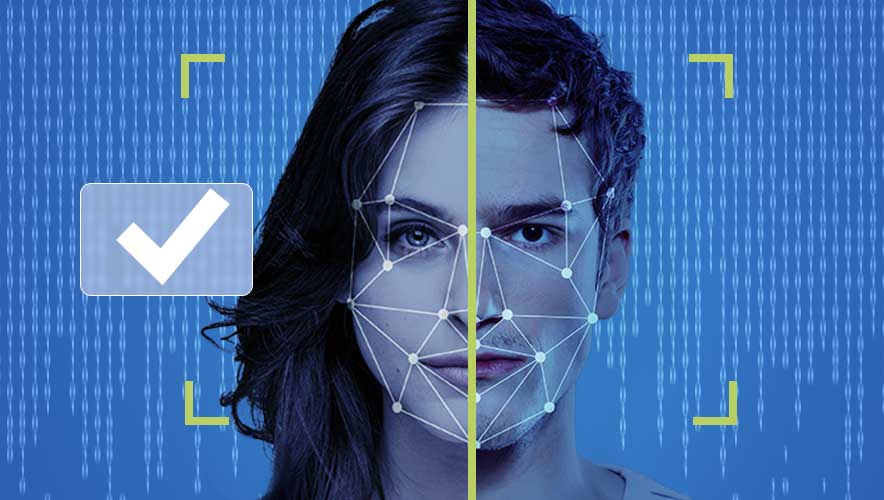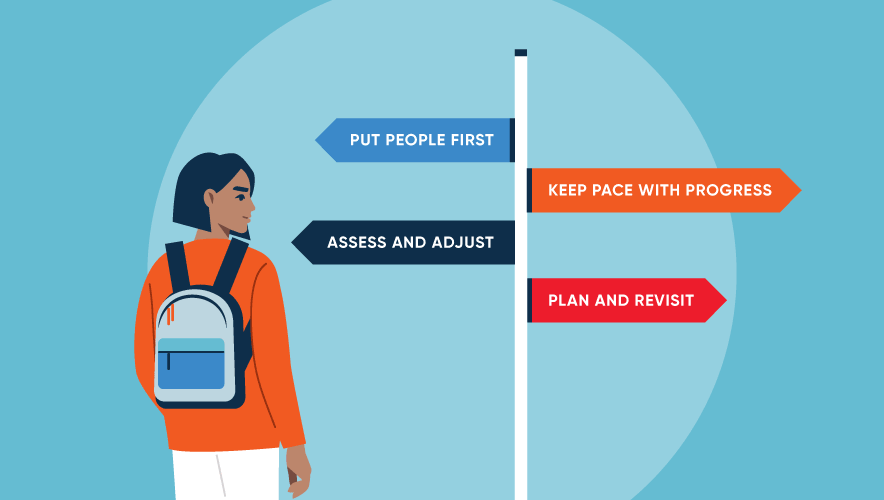New Research Identifies Weaknesses in Policies, Procedures for U.S. Law Enforcement Use of Face Recognition
Face recognition technology and procedures for its use do not work well enough to reliably serve U.S. law enforcement agencies who implement it, according to new research published this week by Georgetown Law.
“Police have been relying on face recognition searches for more than 20 years without asking or answering a fundamental question: how reliable are the results of the search?” asks Clare Garvie, senior associate with the Georgetown Law Center on Privacy and Technology and author of the report, A Forensic Without the Science: Face Recognition in U.S. Criminal Investigations. “We know face recognition has led to the wrongful arrests of at least three innocent people. How many others have there been? Thousands of cases into its use, we still lack a fundamental understanding of how often the search process gets it right…and wrong.”
The report was published this week, and bases its findings on 20,000 Freedom of Information Act (FOIA) documents and existing research in computer science, forensic science, and psychology to analyze 1:many face recognition searches. These are typically known as face identification—where an image of an unknown person (a latent face) is compared to a database of known people (face prints) to determine the individual’s identity.
U.S. law enforcement began using this style of face recognition in 2001—the Florida Pinellas County Sheriff’s Office received a grant to purchase it. It’s now used by at least 20 federal agencies by 2020 who plan to expand their use of the technology through 2023, according to the report.
Process Problems
When conducting a 1:many face recognition search, most police agencies follow these steps:
- Selecting a probe photo: Police officers select a photograph of the unknown individual to run a face recognition search on.
- Selecting a database to search: Police officers may have access to several face recognition databases, such as FBI agents who can use 21 different U.S. state driver’s license databases along with federal photo databases for searches.
- Preprocessing the selected photo: Police officers edit the probe photo to make it more like the photos in the selected database, or improve the photo quality, such as through blurring pixels in a low-quality image or using 3D modeling to recreate facial features not visible in the selected image.
- Conducting an algorithmic search: Generates a template of the probe photo to compare against templates in the selected database to return a list of possible matches based on a confidence score created by the algorithm.
- Conducting a human review: Police officers determine if the system has produced a possible match.
- Conducting Investigative Follow-Up: Police officers, generally, are instructed to conduct additional follow-ups and research to corroborate the face recognition match.
This process means that face recognition, as law enforcement uses it, is a subjective forensic tool method that involves “significant human judgment,” according to the report.
“Analysts’ approaches will vary in which photos to select and how to edit them, which features to focus on during candidate review, how to compare those features, and how much weight to give respective similarities and differences,” Garvie explained.
Police agencies have stressed to their officers that a face recognition “possible match” is to be considered only an investigative lead, and that other confirming information needs to be obtained by investigators before a match can be arrested. The details on what additional information is required, however, can be vague.
“Few, if any, policies or training materials detail for their officers precisely what amounts to sufficient corroboration of the investigative lead, including the quality, quantity, and independence from the face recognition search required of the additional evidence collected,” according to the report. “Some agencies appear to provide informal guidance, but it is highly inconsistent across jurisdiction.”
Garvie’s analysis also found that there is little precedent for U.S. law enforcement agencies to look to when they are creating their internal policies on face recognition because the court system has not ruled on whether—or how—matches should be considered in investigator’s analysis.
“In some cases, officers have collected separate and compelling information that supports the face recognition search findings, such as an independent eyewitness identification,” she wrote. “In others, however, officers have relied heavily, if not exclusively, on the leads generated by face recognition searches.”
The courts have also not defined the line between an investigative lead and probable cause to make an arrest when it comes to face recognition technology—or what quality of evidence is needed to corroborate a face recognition match.
“That face recognition has yet to be introduced as evidence in court does not mean it hasn’t been used as evidence against someone,” the report explained. “It merely means that an unknown number of defendants never had the opportunity to challenge the primary piece of evidence linking them to the crime.”
Update Weaknesses
The National Institute of Standards and Technology (NIST) has been testing the accuracy rates of face recognition algorithms in its ongoing Face Recognition Vendor Tests (FRVTs). Recent tests of major face recognition vendors show that the technology is improving, but there has yet to be a test of the reliability of face recognition technology that is used by U.S. law enforcement officers.
“In the absence of an appropriately constituted study, face recognition as U.S. law enforcement uses it today currently lacks the scientific validity required to consider it a reliable forensic technique,” Garvie wrote. “By using it in investigations for the past 20 years absent this foundational understanding, the law enforcement community is following a pattern familiar within the broader field of forensic science—assuming a technique is reliable without scientifically established proof. The consequences may mirror those of other forensic techniques as well: Brady violations, wrongful convictions, and the need to revisit decades of prior determinations.”
Law enforcement agencies might also be using older algorithms to conduct face recognition searches. For instance, the report highlighted that Arizona’s Maricopa County Sheriff’s Office was using an algorithm in 2016 for face recognition that had not been updated in four years.
Additionally, there are no legal requirements for companies that sell face recognition algorithms or for agencies that purchase them to meet a minimum accuracy threshold. Previous Georgetown Law research found that just one agency required vendors to meet an internal performance test in operational conditions of its face recognition technology.
“Face recognition company marketing materials often include statements about accuracy, but those are often incomplete, hard to verify, may not be based on data that represents real-world use, or may not be well-understood by company representatives themselves,” according to this week’s report.
Human Tendencies
To combat errors from face recognition systems, many agencies require that a human be in the loop—to verify the system’s results and to follow-up on leads. Humans, however, are not universally excellent at identifying unfamiliar faces.
“Error rates range widely, from as low as 10 percent to higher than 60 percent, with factors such as image quality, pose variability, age between photographs, or similar looking imposters having a direct impact on accuracy,” Garvie explains. “In one early study, participants exhibited error rates of up to 30 percent when comparing high-quality photos and videos where pose, expression, and age of subjects were all held constant.”
Specialized training can help mitigate human error rates, but the level of training recommended by the Facial Identification Scientific Working Group (FISWG) is extensive. Trainees must undergo six months of full-time training under supervision for facial reviewers; facial examiners—those qualified to make forensic conclusions—would be required to undergo 24 months of training.
Additionally, more research and analysis needs to be done to understand how investigators cognitive bias impacts face recognition use in law enforcement.
Next Steps
While the report does not explicitly call for the end of law enforcement use of face recognition technology, it is meant to be a resource for researchers, defense attorneys, judges, and police departments to assess how face recognition plays a role in our current policing system, according to a press release.
The report recommends that additional research and examination of face recognition technology be implemented to assess whether it is a reliable forensic tool—similar to past research on the use of fingerprints, blood spatter analysis, and other forensic science methods.
“Depending on its answer, the appropriate next step may well be to eliminate the use of face recognition in criminal investigations entirely, especially if it is impossible to establish strong, scientifically valid safeguards against error, subjective judgement, and cognitive bias,” Garvie wrote.
Security Management reached out to the International Association of Chiefs of Police for comment on this report. We will update this story if we receive more information.












